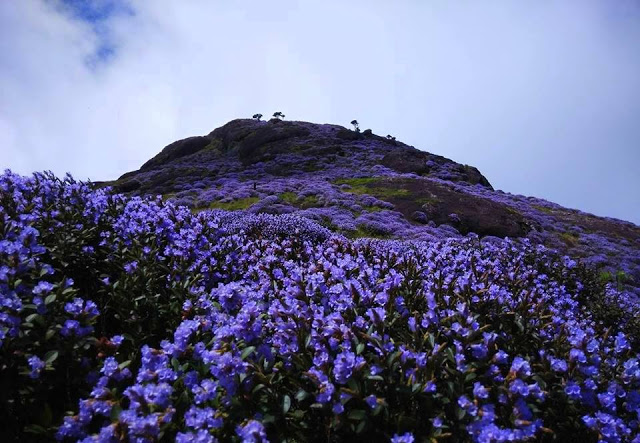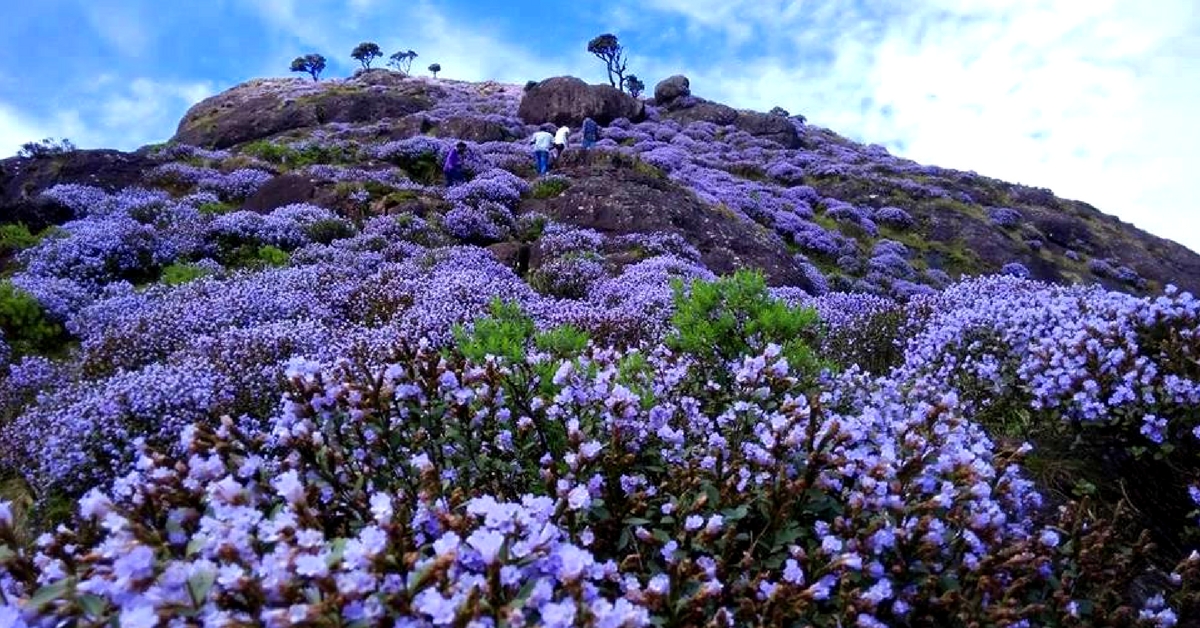Carpeting the vast terrains of Nilgiris once in twelve years, the mystical Neelakurinji in its full-bloomed glory is a sight to behold. In fact, it is from these purplish-blue flowers that the legendary mountains take its moniker from.
Neelakurinji, or Strobilanthes Kunthiana, is a shrub commonly found across the Western Ghats but the decade-long blooming period of the flowers is what makes it a rare spectacle amidst the flora kingdom.
Falling under the category of Plietesials, where plants usually grow gregariously and flower simultaneously following a long interval and perish, the Strobilanthes genus, which was described by German scientist Christian Gottfried Daniel Nees von Esenbeck in the 19th century, includes close to 250 subspecies.
Out of 46 variations that are found in India, not all types take the 12-year long hiatus to flower, with some blooming cycles ranging from annual to 16-year period.

Flourishing in valleys and gorges, the shrubs are habituated to a colder climate zone and grow up to 30 to 60 cm high. Every shrub reproduces only once in their lifetime and dies after the magnum opus flowering. The cycle of life starts again with the seeds beginning to sprout.
Growing profusely across the shola grasslands of Western Ghats, the neelakurinji is found across the hilly regions of Kerala, Karnataka and Tamil Nadu. The blossomings have been documented since 1838, with last mass blooming having recorded in 2006.
One of the interesting aspects observed during the blossoming period by botanists and zoologists alike is the rampant increase of the bee population flocking to the vicinity for the nectar.
Large stocks of honey are amassed during this period, which is famed for its sweetness.
For the tribal communities inhabiting the steep mountains of Munnar and Nilgiris, neelakurinji is an object of utmost reverence, and its blooming is considered to be an auspicious phenomenon.
This age-old reverence withholds the tribes from causing any form of damage to the shrubs or its withered twigs until the seeds hit the period of maturity.
According to a Muthuvan lore, it was with a garland of neelakurinji flowers that their revered god Murugan had married Valli, a veda (tribal hunter) girl and hence the flower is annotated by the Muthuvars as the symbol of love and romance. Even their age calculation system revolves around the blooming cycle of the neelakurinji.
Such is the enigma lingering around neelakurinji that even the literary realm couldn’t escape from its lure.
One can find references to the flower in classical Tamil literature as annotations used to describe the pertaining mountainous landscape where it blooms.
A befitting example is that of ‘Red Earth and Pouring Rain’, a poetic verse from Kurunthogai, a Sangam literature anthology dating all the way back to 6th century C.E. Another example is that of Kurinji Flowers, a historic novel authored by Clare Flynn where the neelakurinji rests as a backdrop to a love story set in the pre-independence era.
As romanticised by ancient and contemporary literary pieces, the hills that once used to be carpeted with the mauve blossoms now find lesser shrubs in their midst. With the British making the Ghats their home during the colonial period, much of the neelakurinji habitat was rendered into plantations and dwellings.
Following independence, the clearance of hills continued to pave the way for more development projects, plantations and mining.
However, many environmentalists and activists have vehemently vouched for the conservation of the unassuming neelankurinji that plays a key role towards maintaining the ecological balance in the Ghats.
Save Kurinji Campaign Council was established in Kerala during the 1980s for the conservation of the neelakurinji and its habitat and campaigned for the hills between Kodaikanal and Munnar to be declared a protected sanctuary.
In a bid to save the neelakurinji, a 32 sq. km area encompassing the flower’s core habitat near Kottakamboor and Vattavada villages in Idukki district was declared as Kurinjimala Sanctuary by Kerala’s Forest Minister Benoy Viswam in 2006.
Alongside, India Post released a postal stamp depicting the neelakurinji, which was part of a scheme named ‘explore the mysteries of nature through Indian postage stamps’.
While 2018 is being fervently awaited by environmentalists and tourists to witness the mass phenomenon, many locations in Tamil Nadu and Karnataka have been reported to have sighted early blooms in the last two years.
Breaking the 12-year spell, the neelakurinji is expected to bloom between July and November this year, with some areas already witnessing the rare phenomena. Plan a trip wisely and be prepared to be mesmerised by the elusive blooms of neelakurinji, just the way they have transfixed generations after generations.
Like this story? Or have something to share?
Write to us: contact@thebetterindia.com
Connect with us on Facebook and Twitter.
NEW: Click here to get positive news on WhatsApp!
If you found our stories insightful, informative, or even just enjoyable, we invite you to consider making a voluntary payment to support the work we do at The Better India. Your contribution helps us continue producing quality content that educates, inspires, and drives positive change.
Choose one of the payment options below for your contribution-
By paying for the stories you value, you directly contribute to sustaining our efforts focused on making a difference in the world. Together, let's ensure that impactful stories continue to be told and shared, enriching lives and communities alike.
Thank you for your support. Here are some frequently asked questions you might find helpful to know why you are contributing?

